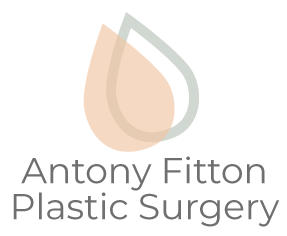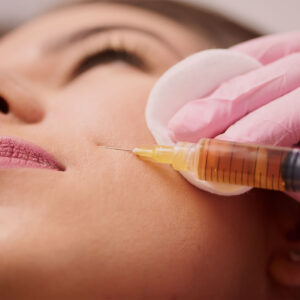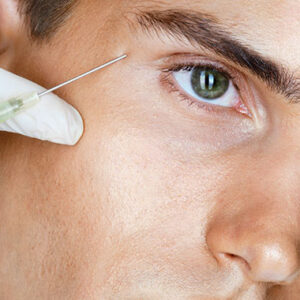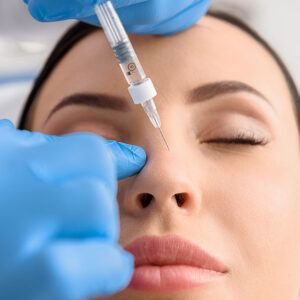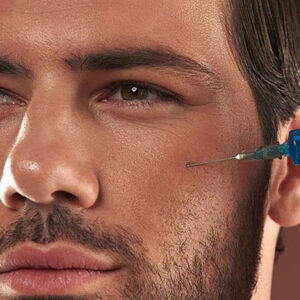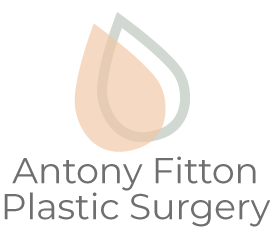email: in**@an**********.uk
call: 07494 250277


Facelift and Neck-lift (non-surgical)
A facelift and neck-lift (non-surgical)
Tighten your skin the non-surgical way.
The face is the beacon of our soul. It attracts, communicates and indicates. It portrays our thoughts, feelings, anxieties and contentment. Inevitably it ages!
Certain aspects of a non-surgical facelift are perceived by some as premature, tiresome if not tiring, embarrassing or at worst disfiguring. The face can also be the victim of trauma or ravaged by disease.
Non-surgical rejuvenation of the face is a speciality technique aimed at restoring form and function. This will result in a tighter, smoother look and more youthful appearance. The facial treatments, varied as they now are, can be tailored to individuals needs of facial reconstruction and rejuvenation.
Ageing of the Face and Neck
Ageing is a gradual process marked initially, perhaps, by ptosis of the eyebrow and peri-oral lines. By the age of 40 years or so, we observe hooding of the brow, sagging of eyelid skin, Naso-labial folds and jowls. During our 50s and 60s facial wrinkles deepen, the neck sags and muscle and soft tissue wither.
As each of these processes become apparent Plastic Surgeons can intervene, non-surgically and surgically, to restore appearance.
Each and every patient will have their own requirements in this regard. Botulinum toxin, facial fillers or laser resurfacing have a distinct role in managing the early changes of ageing. In patients with advanced features of ageing surgical intervention, such as Blepharoplasty, Brow lift, and Face and Neck lift play a more important role.
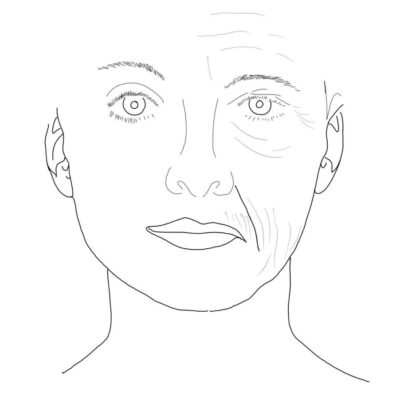

What to look for in your face
Ageing skin is marked by wrinkles and fine lines. Those of most concern to patients are:- Crow’s feet at the outer aspect of the eyes
- Frown lines between the eyes
- Nasolabial folds which run from the nose to the corner of the mouth
- Marionette lines
- Labio-mandibular folds and jowls
- Brow creases
The Solution
Dermal filler injections are one type of treatment that can help to reduce the appearance of wrinkles and rejuvenate the face.Age, smoking and sun exposure leads to thinning of the dermis. In sites where there are muscles that move the skin creases and wrinkles develop.
Most commonly used dermal fillers are produced from Hyaluronic acid – a prominent constituent of the dermis.
When injected into or beneath the dermis it acts like a sponge drawing in water to restore volume. This makes this form of treatment especially effective in restoring lip projection.
Dermal fillers such as Juvaderm® are safe and adverse reactions are unusual.
Patients may experience stinging at the site of injection, associated with redness, tenderness, itching and or bruising. But these are all temporary.
Patients who have a history of allergy should probably defer this type of treatment. Certain medications such as aspirin may increase the risk of bruising and, if possible, these should be withdrawn for a week or so prior to treatment.
Treatment takes 15 to 20 minutes and can be performed in the clinic.
Juvaderm contains a local anaesthetic designed to reduce the discomfort of injection, but in our experience, some patients request small additional injections to numb the area just before treatment.


